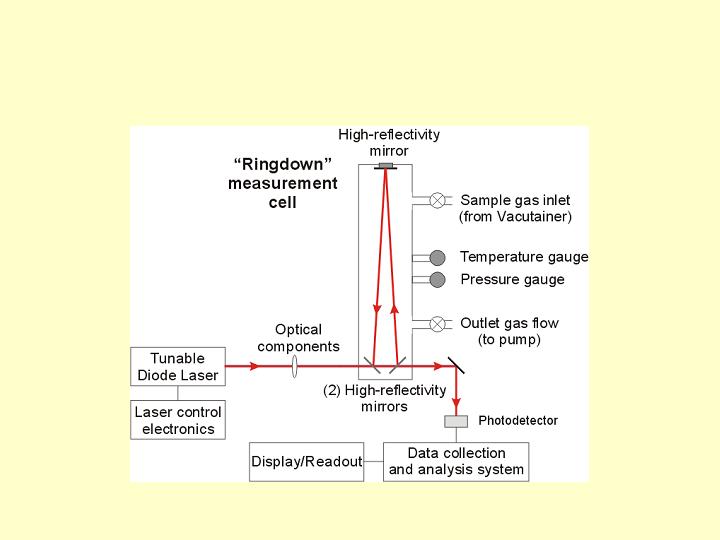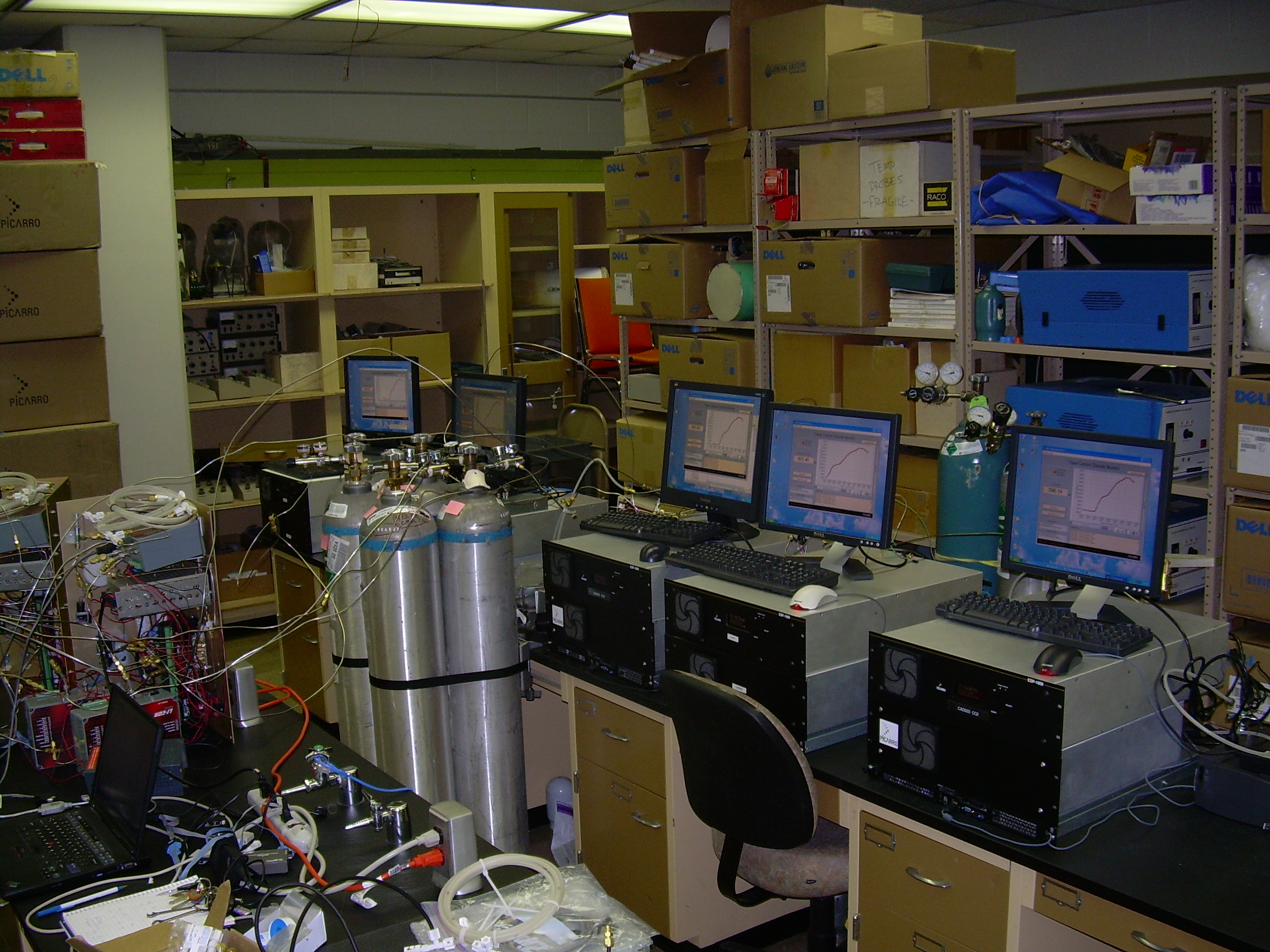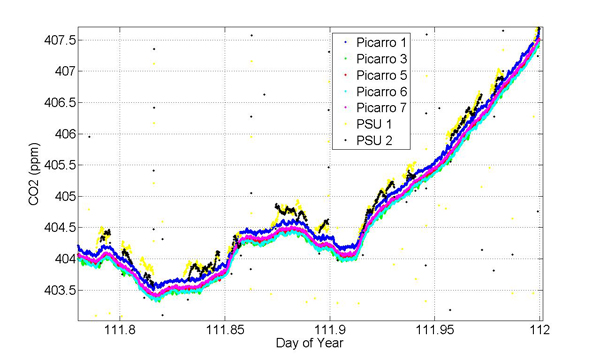 Cavity ring-down
spectroscopy instruments from
Picarro, Inc.,
Cavity ring-down
spectroscopy instruments from
Picarro, Inc.,Cavity Ring-Down Spectroscopy
 Cavity ring-down
spectroscopy instruments from
Picarro, Inc.,
Cavity ring-down
spectroscopy instruments from
Picarro, Inc.,
- Tune laser and cavity to desired wavelength
- Inject light into the cavity
- Once light circulating in the cavity hits a threshold, stop injecting
- Measure decay time of light in cavity
- Compare decay time to that of an empty cavity
- Repeat
The sensitivity of the instrument comes from the extremely long effective path length (~20 km from a physical cell length of ~20 cm) and its insensitivity to optical power fluctuations. Cavity ring-down spectroscopy is inherently very linear with the ring-down time directly related to concentration via Beer’s Law. One advantage of the CRDS instruments is the reduced need for calibration compared to the systems used in the Ameriflux network which are calibrated every four hours using four calibration tanks. Although the long-term stability is not exactly known, tests have shown accuracy to within 0.2 ppm on a monthly time scale without additional calibration. For quality assurance purposes, two reference gases are sampled by the CRDS systems every twenty-two hours. If necessary, these results can be used to develop a post calibration. Another advantage is that the instruments, rather than requiring drying, measure the water vapor in the sample and correct for the resulting pressure and dilution effects. The instruments have temperature and pressure control as well. A modem and cell phone links allow real-time communications with the systems; data from each system is sent daily.

Prior to deployment, the five CRDS systems were tested together with two low-cost, but high-precision, high-accuracy CO2 measurement systems. For details on the low-cost systems, see www.amerifluxco2.psu.edu.

